From the arid forests in the south to the cool, moist forests of the north, Idaho has a varied climate and topography, perfect for over 20 different tree species. In the drier southern regions, you will find an abundance of ponderosa pine and Douglas fir, while the wetter northern regions are dominated by mixed conifer forests. Check out these 10 most iconic trees native to Idaho and learn about their unique characteristics and locations.
1. Western White Pine

The cones found on western white pine trees are slender.
©Sunshine Haven Photo/Shutterstock.com
As the state tree of Idaho, the western white pine is definitely one of the most iconic in the state. This species lives up to 350 years and stands between 120 and 180 feet tall. The western white pine is an important timber tree found in mixed forests at low to middle elevations in the Northern Rockies region. While this species is susceptible to fungus, forestry researchers are developing varieties resistant to the disease.
2. Douglas Fir
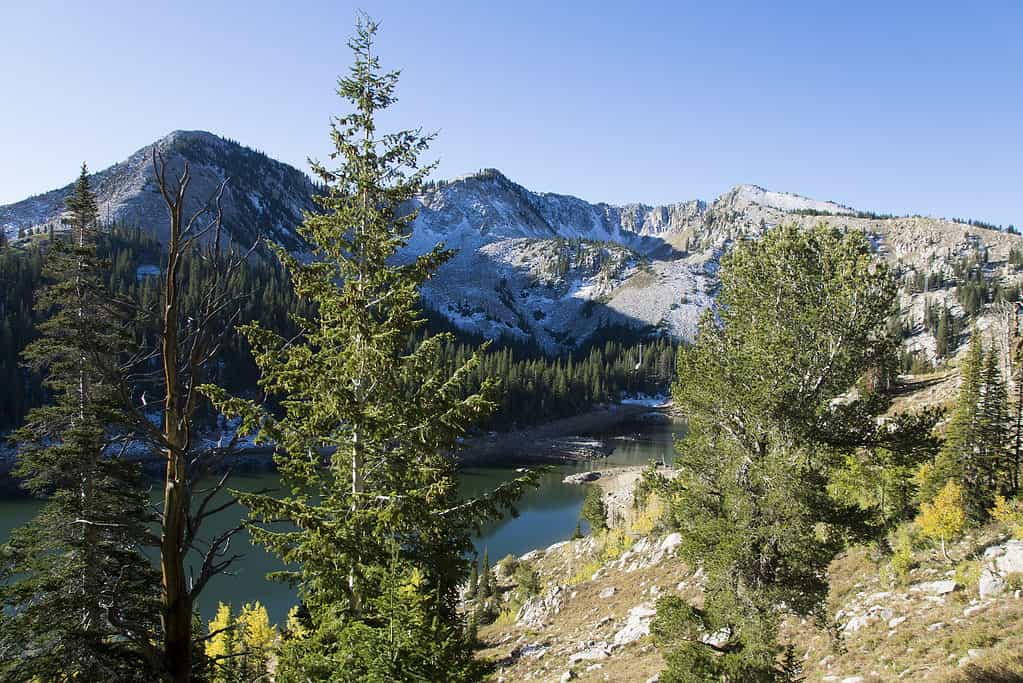
Douglas fir trees are one of the most important timber species in the world.
©IrinaK/Shutterstock.com
The Douglas fir is one of the most important timber species in the world. Not only is it used to make veneer for plywood, but animals like deer and elk eat its foliage. Its wood is also exceptionally strong and works well for structural framing. Douglas fir trees can live up to 300 years and grow between 110 to 170 feet tall. You can find them in rocky soil in mixed forests across middle to low elevations.
3. Western Larch
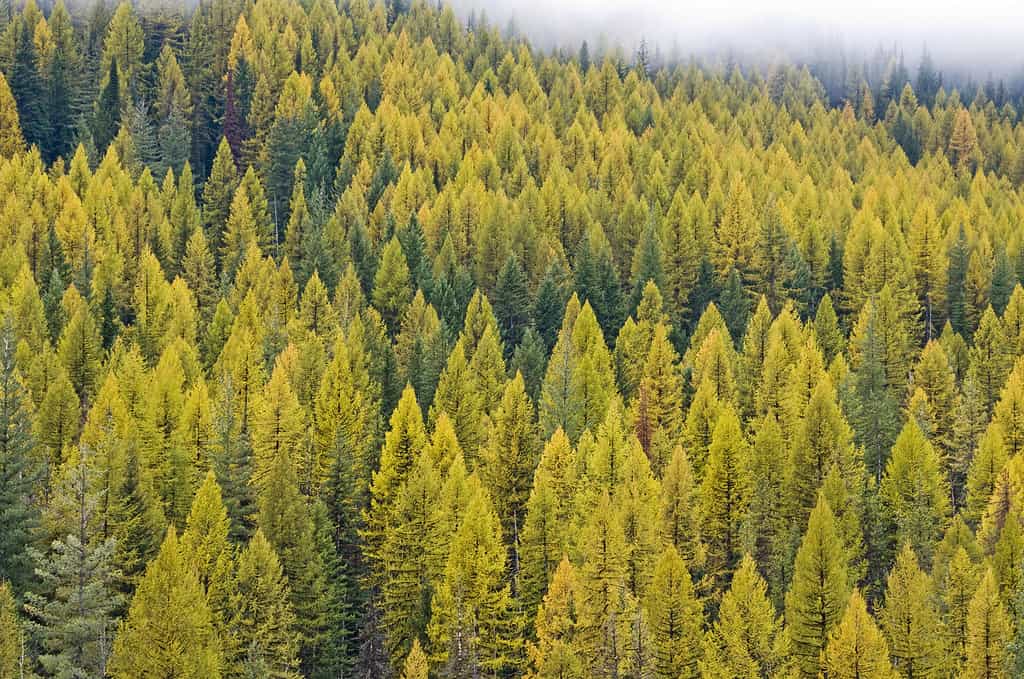
Larch trees can live over 500 years.
©PhilAugustavo/iStock via Getty Images
The western larch is often a tree that follows or survives forest fires. They can live over 500 years and grow up to 160 feet tall. Western larch trees are very useful in construction, such as flooring and paneling. They are also popular as clean burning firewood. These beautiful color-changing trees grow on mountain slopes and valleys in mixed forests, preferring gravelly or sandy soils.
4. Ponderosa Pine
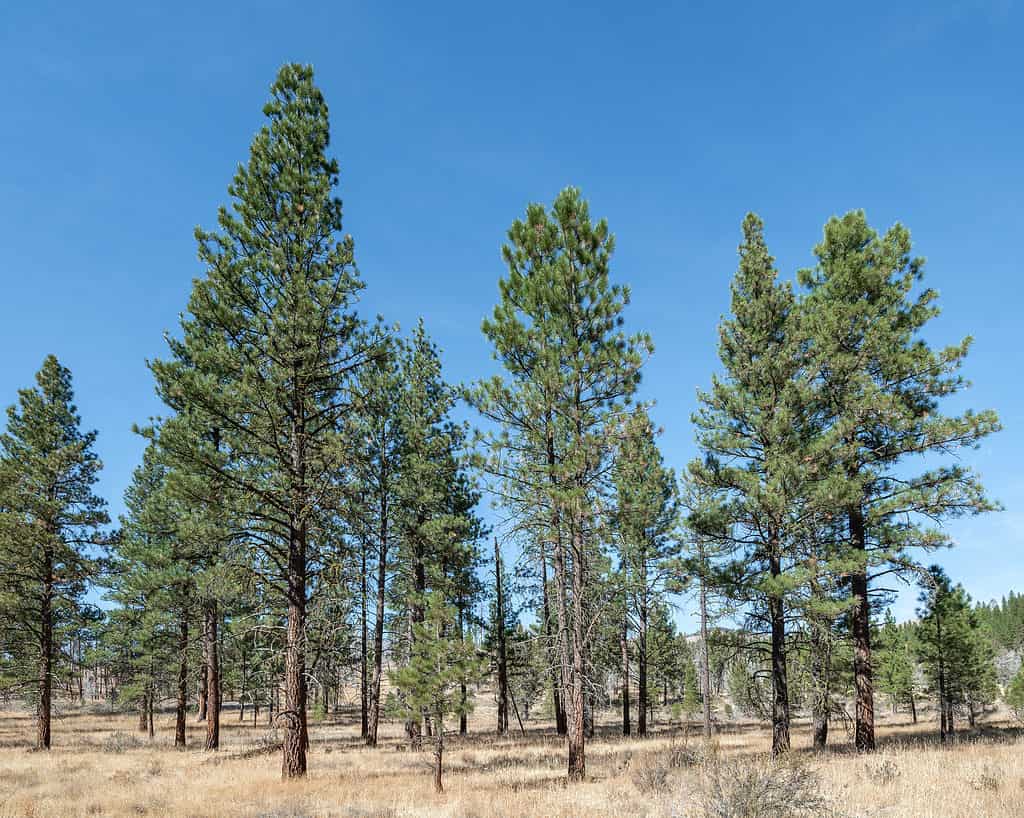
A stand of ponderosa pine trees is very drought-tolerant once established.
©Dominic Gentilcore PhD/Shutterstock.com
Located in lower elevations and dry southern slopes, the ponderosa pine grows in single species stands. It features fire-resistant, aromatic bark used as shelving and interior paneling. And it’s also an essential tree species for birds, squirrels, and chipmunks who store and consume its seeds. Ponderosa pine lives up to 300 years and grows between 120 and 180 feet tall.
5. Grand Fir
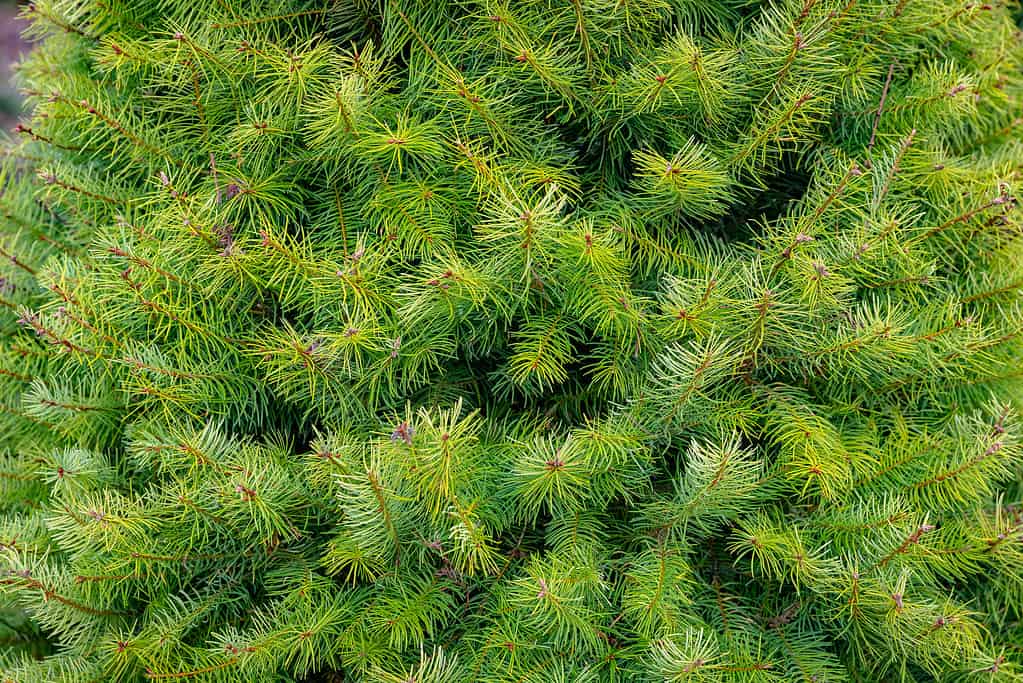
Grand firs are some of the most iconic trees native to Idaho.
©Gerardo Martinez Cons/iStock via Getty Images
The grand fir, also known as white fir, is a prolific grower in the moist valleys and mountainous regions of Idaho, where they most often occur in mixed forests. These trees are known for their healing properties. The gum that exudes from the bark can be used as an external ointment for general ailments. Grand firs live up to 250 years and grow between 110 and 160 feet tall.
6. Western Red Cedar
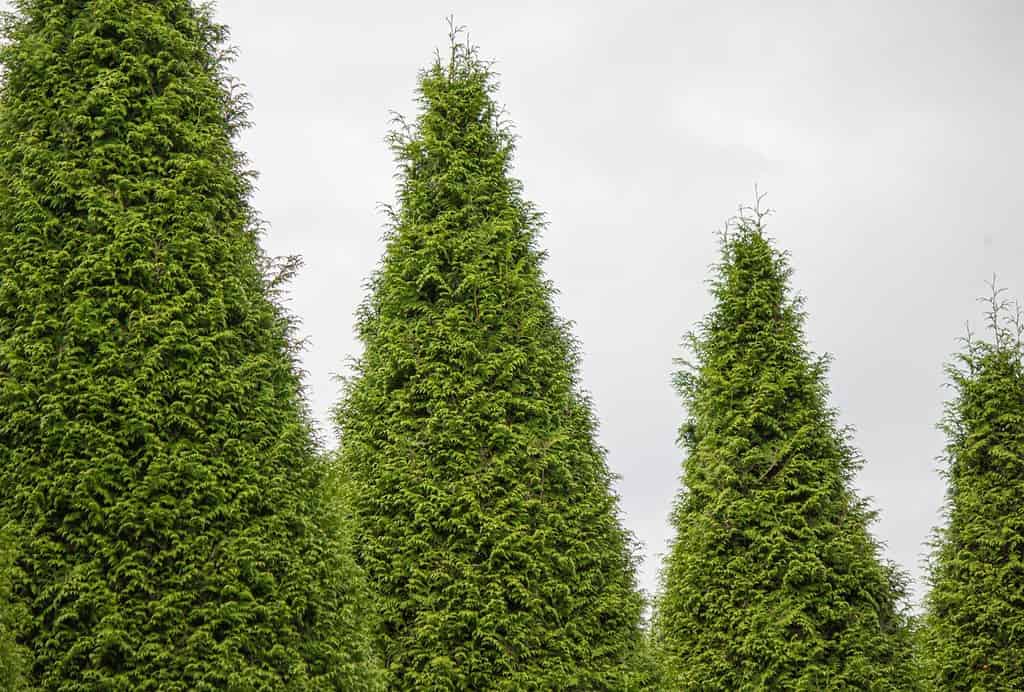
Western red cedar grows in moist hillsides near streams.
©Wirestock Creators/Shutterstock.com
Living over one thousand years old, the western red cedar grows up to 160 feet tall in moist hillsides near streams. They like deep, rich soil and often grow around western hemlock, western larch, and Douglas firs. These slow-growing and long-lived trees are resistant to rot and decay. People use their wood for roofing shingles, paneling, and utility poles. Native Americans once used them to make canoes, baskets, clothes, and totem poles.
7. Quaking Aspen
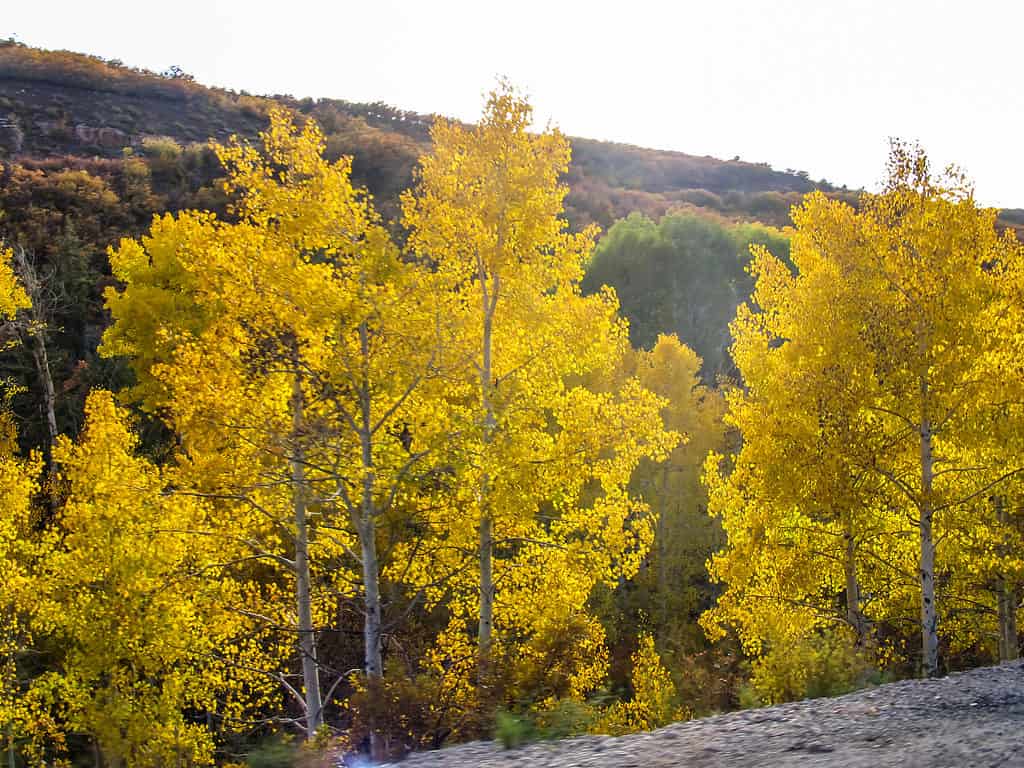
Quaking aspens provide an important food source for many animals within Idaho’s wilderness.
©iStock.com/Marieke Peche
Due to their trembling nature from a slight breeze, quaking aspens are an easily recognizable species in Idaho. These trees stand 60 feet tall and live up to 120 years but are often replaced by conifers. Quaking aspens grow in pure stands at low to mid-elevations in sandy or gravelly slopes. People use their wood for matches, particle boards, and boxes.
8. Black Cottonwood

Black cottonwood provides an ideal habitat for cavity nesters, like woodpeckers and owls.
©iStock.com/weisschr
The black cottonwood is the tallest native western hardwood tree in Idaho. This species lives up to 120 years and grows between 60 and 120 feet tall. It grows in moist valley soil, primarily on streambanks and floodplains. People use its wood to make boxes and crates, and its hard, unripe seeds are used in pea-shooter ammunition.
9. Lodgepole Pine
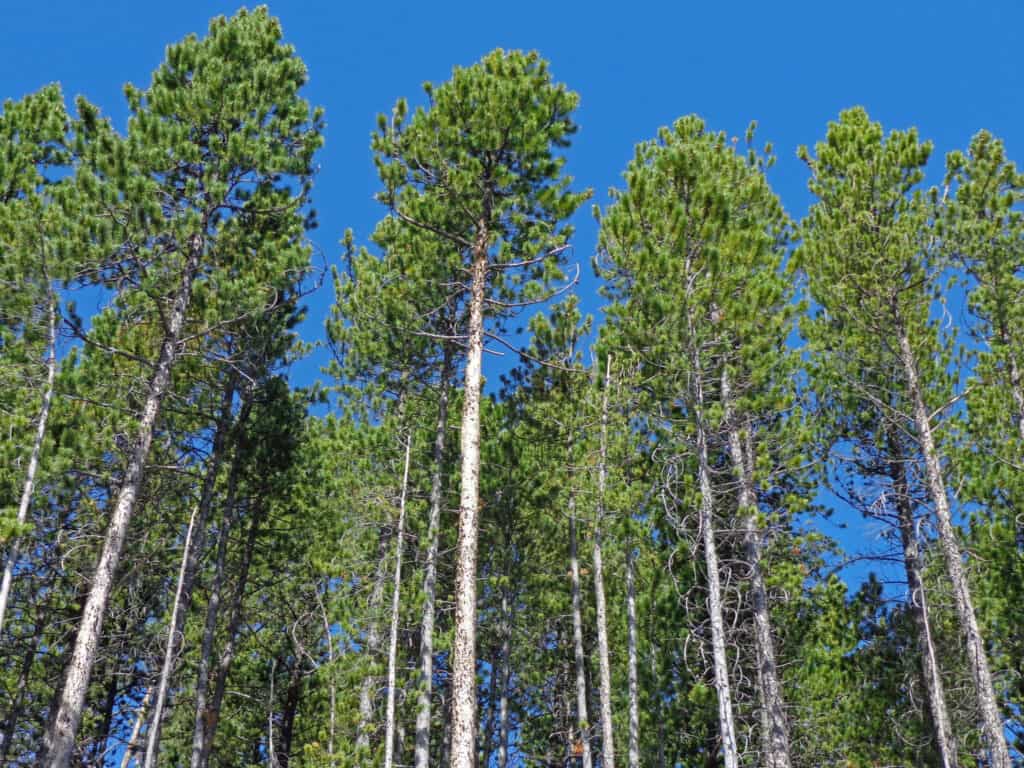
The lodgepole pine or
Pinus contortais one of the most common pine trees in North America.
©Sara Kendall/Shutterstock.com
Known for their adaptive tendencies, lodgepole pines close their cones tightly during forest fires and release their seeds to begin a new forest once the heat has passed. These trees are very common in Idaho, where you can find them in pure stands in well-drained soils in middle elevations. These trees live up to 150 years and grow between 70 and 110 feet.
10. Whitebark Pine
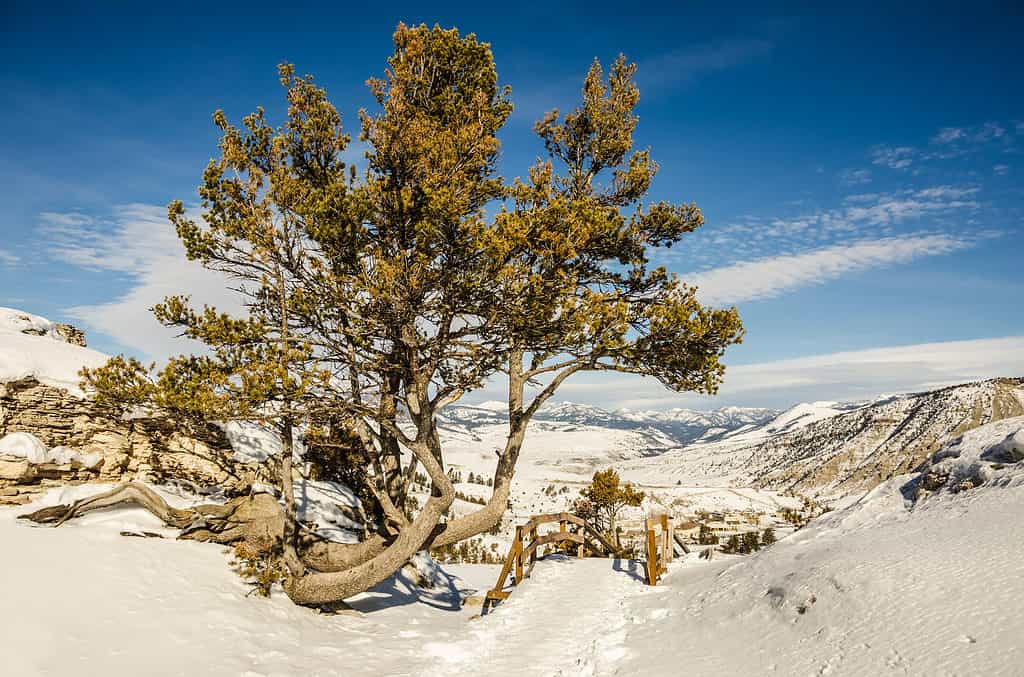
Whitebark pine thrives in high elevations.
©Sue Smith/Shutterstock.com
The whitebark pine thrives in high elevations around 5,000 feet. This species is a favorite food of the grizzly bear and a species of nutcracker, which disperses its seeds. Whitebark pine can live up to 450 years and grows between 30 and 60 feet tall. They also exist as shrubs near timberline.
The Most Iconic Trees Native to Idaho: A Recap of the Top 10
| Number | Trees Native to Idaho |
|---|---|
| #1 | Western white pine |
| #2 | Douglas fir |
| #3 | Western larch |
| #4 | Ponderosa pine |
| #5 | Grand fir |
| #6 | Western red cedar |
| #7 | Quaking aspen |
| #8 | Black cottonwood |
| #9 | Lodgepole pine |
| #10 | Whitebark pine |
The photo featured at the top of this post is © Paul B. Moore/Shutterstock.com
Thank you for reading! Have some feedback for us? Contact the AZ Animals editorial team.







